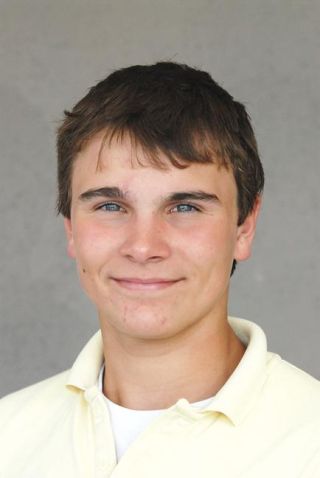In many ways, 14-year-old Islander T.J. Blackburn is like other kids his age: an eighth-grader, athletic and studious. But unlike most of his counterparts, Blackburn recently spent three days wrapped in Goretex heading for the summit of Mount Rainier.
Mount Rainier, at 14,410 feet, is the most extensively glaciated volcanic peak in the continental United States — and Blackburn climbed it mostly on his own accord.
“My dad was fine with it, but my mom was a little hesitant at first, but I trained and she knew I was serious about it and I would be safe, so she let me go,” said Blackburn [both of his parents, John and Joanne, have done the climb before].
Plus, he was in good hands. Blackburn utilized Rainier Mountaineering, Inc., (RMI) a guide service that was started by Lou Whittaker, the first American to successfully summit Mount Everest. One of the guides on Blackburn’s trip was Win Whittaker, a man who has reached the summit of Mount Rainier more than 150 times, among other feats.
Generally, the company doesn’t let people younger than 16 climb, but made an exception because of Blackburn’s previous experience, which included climbing Mount Adams.
Blackburn’s can-do attitude also couldn’t have hurt.
“I didn’t really have any reservations about it,” he said. “I was ready to go. I figured I was ready to go to my limit, and if I didn’t make it, I would know that I gave it my best shot.”
As a participant in lacrosse, football and wrestling, Blackburn already had a lot of the physical conditioning necessary. In the six weeks leading up to the climb, he spent a lot of time on the Stairmaster with his dad in order to work on more climbing-specific exercises.
“I hiked Mount Si with a 50-pound back and worked out on the Stairmaster for 35 minutes to an hour straight,” said Blackburn of his training regimen.
On May 24, Blackburn attended an RMI safety school, which is a prerequisite for making the climb. There, Blackburn said, they teach participants how to walk with crampons and how to deal with potential hazards during the climb.
That day was also the first time Blackburn met the other people he’d be climbing with — a team of eight, including three guides.
The day following the safety school, Blackburn and his team trekked from Paradise (at 5,400 feet) to Camp Muir (at 10,080 feet). Blackburn said the team left Paradise at 10 a.m. and it took five hours to get to Camp Muir, where they stayed the night.
Blackburn awoke later that evening and headed for the summit at midnight, literally ascending with the sun. The team climbs at those hours because it’s the safest, Blackburn said. There are fewer crevasses and the bridges are stronger.
“From Muir to the summit, we were divided into three teams,” said Blackburn. “Everyone on the team is roped together, and there’s only 5 feet of space between you.”
As he climbed, Blackburn said the sunrise illuminated the potentially perilous landscape around him.
“The sunrise is both a motivator and a distraction,” he said. “It’s so beautiful, but you also have to focus on just putting one foot in front of the other.”
After escalating almost 1,000 feet per hour, the snowfield at the summit was a welcome sight.
“That was probably the hardest part, right at the end,” he said. “You’re not used to the altitude, and at that point it becomes a mental push.”
Blackburn reached the summit at 8:15 a.m., and said the view from the top was completely worth it. The snowfield “looked unimaginable,” and the views — Blackburn said Mt. St. Helens and other local peaks were visible on the clear day he climbed — were simply stunning.
The team stayed at the top for approximately 45 minutes, taking in the views, snapping photos and catching their breath. Then, with an equal amount of precision, Blackburn headed back to Paradise.
“Coming down is a breeze,” he said. “You’re so pumped up on adrenaline.”
The team made it back down in half the time it took to go up, which Blackburn said is typical.
Weeks after May 26, the day he reached the summit, Blackburn is nothing but positive about his experience.
“It was really enjoyable,” he said.
Perhaps he will pass on that enjoyable experience to his younger sister, whom Blackburn said also hopes to climb Mount Rainier. He may even accompany her on the trip, he said. Though he has no concrete plans to do any more climbing at the moment, he is intrigued by Climb for Clean Air, which is a pledge-based climbing program to benefit the American Lung Association. He likes the idea of participating in something that benefits others and allows him to climb, he said.
But for now, it’s back to the grindstone for Blackburn.
In his own words: “I do sports and school, and I don’t have time for much else.”


